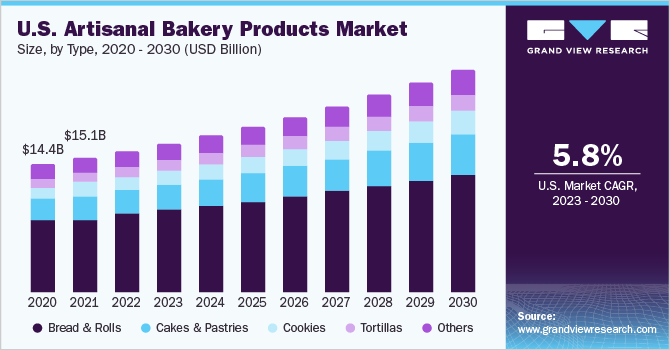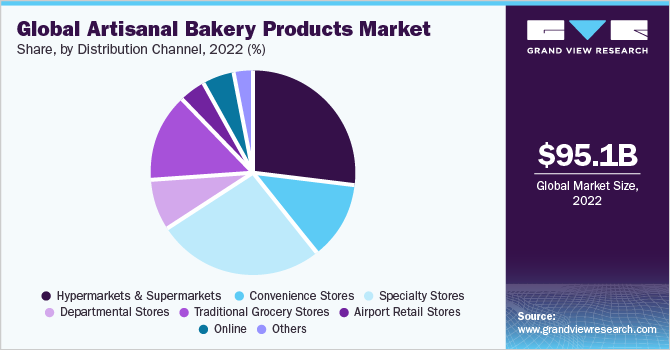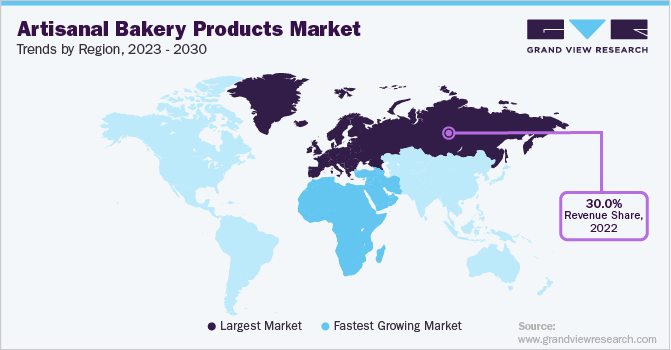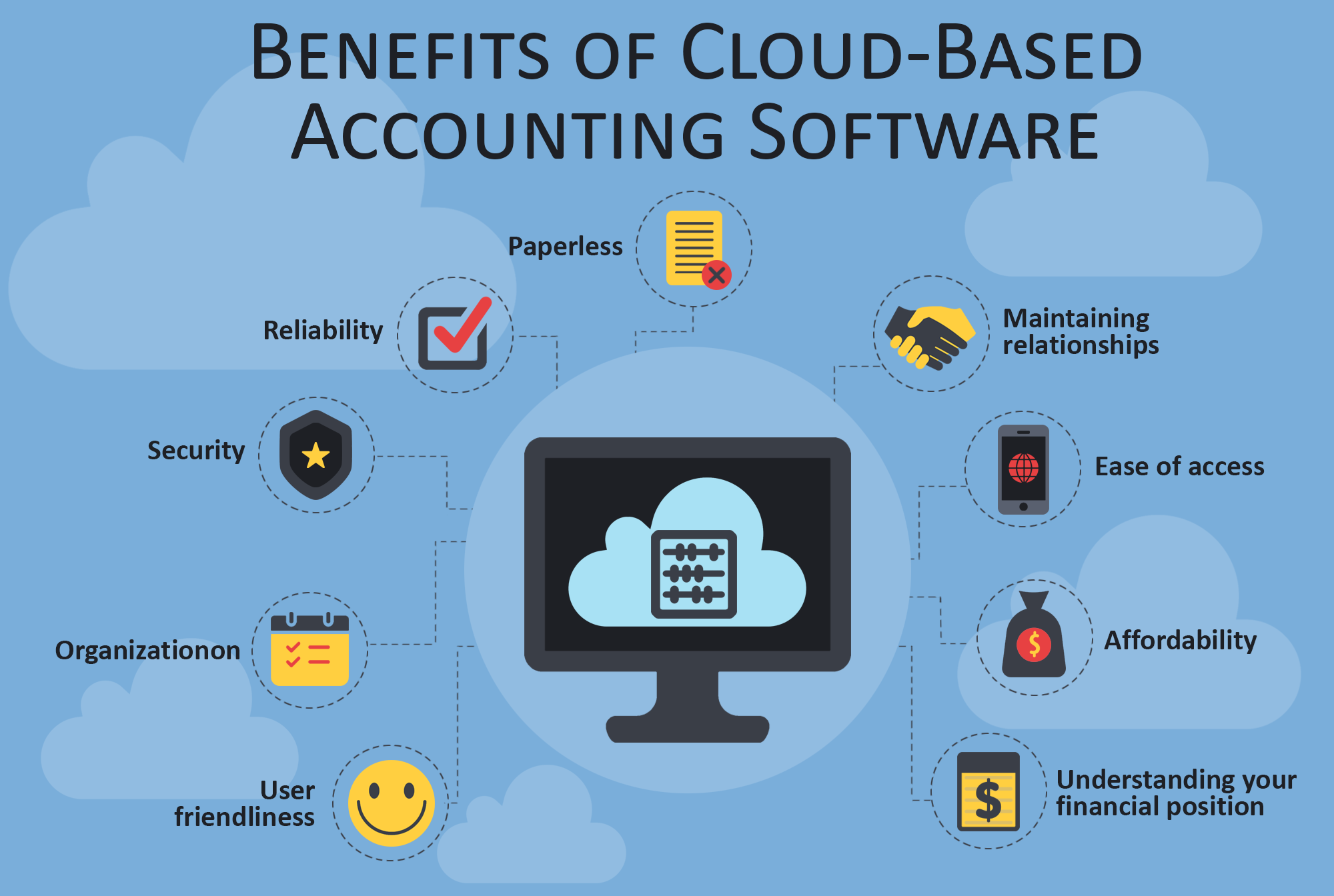Opening a cupcake shop can be a sweet endeavor. The cupcake industry has grown steadily over the past decade and is projected to reach $149.2 million by the year 2034. As the cupcake craze continues, more and more people are indulging their entrepreneurial spirit by turning their baking passion into a thriving small business.

Launching a successful bakery takes careful planning, ample resources, and solid business acumen. From developing recipes to managing employees, cupcake entrepreneurs need to handle all aspects of running a food establishment. They must also keep up with evolving consumer tastes and food trends to keep their bakery competitive.
This guide will walk you through how to start a cupcake business. Topics include market research for a well-rounded business plan, opening a business bank account for smart accounting, registering an EIN, obtaining business insurance, forming an LLC, and more.
1. Conduct Cupcake Market Research
Market research is an important part of forming a successful cupcake business. Market research offers insight into your target market, local events that might bolster your brand, and trends in the food business market.

Some of the details you’ll learn through market research for your new business include:
- Several factors have fueled demand for the bakery business model.
- The rise of television shows focused on baking and cupcakes specifically, like Cupcake Wars, spurred interest and droves of home bakers to open storefronts.
- Cupcakes and donuts have benefitted from the general trend toward affordable indulgences and premium, artisanal baked goods.
- The small format, unique flavors, and customizable decorations of cupcakes appeal to consumer desires for shareable treats and customized experiences.
- Competition has intensified with over 15,000 cupcake operators now active across the country.
- Barriers to entry also remain low with minimal equipment needs beyond baking basics.
- Well-executed products in high-traffic areas can find success.
- Bakeries that creatively leverage events, partnerships, technology, and alternate channels like online ordering can differentiate themselves.
- Backed by thorough market research, an independent cupcake bakery in a top metro area can generate over $200,000 in average annual sales.
- Investments in high-quality ingredients, skilled bakers, and truly creative offerings position new bakeries most competitively.
The opportunity exists to craft a truly artisanal brand and community gathering place around cupcakes. However extensive planning around product differentiation, operations, finances, and location is required to develop a thriving bakery in today’s market conditions.
2. Analyze the Competition
Analyzing your competitors as you start your own business is an important step as a business owner. This provides important facts on the market, the best methods of advertising, popular products, pricing models, and more.

Some ways to get to know local competitors include:
- Identify direct and indirect competitors in your planned geographic area.
- Drive around and note every bakery location already selling cupcakes, especially ones dedicating significant offerings or branding to cupcakes specifically.
- Track down grocery store bakeries, general baked goods purveyors, coffee shops, and dessert shops. These all represent indirect competition for sweet treat dollars.
- Visit competitors posing the biggest threats.
- Document prices, menus, foot traffic estimates, displays, etc.
- Gauge the customer experience when possible to detect strengths, weaknesses, and potential unmet needs.
- Research online reviews for additional insights into customer perceptions and common complaints.
- Check competitors’ social media engagement levels and marketing content strategies.
- Search for relevant industry benchmarking data to contextualize findings, like average cupcake production business costs and sales.
Ongoing competitive monitoring is also advised after opening. Signing up for competitors’ newsletters and notifications or setting alerts enables tracking new product launches, events, location expansions, and real-time reactions to these developments.
3. Costs to Start a Cupcake Business
Launching a cupcake enterprise requires a significant upfront investment to secure space, equipment, ingredients, staff, permits, and operating funds before opening the doors and making the first sale. Individuals should conservatively budget the following expenses when initiating a cupcake bakery:
Start-up Costs
- Commercial Kitchen Equipment – $15,000 to $30,000 Includes ovens, mixers, racks, displays, sinks, ventilation
- Lease Deposit & Renovation – $5,000 to $15,000 Depending on the condition of the retail space
- Ingredient Inventory – $1,000 to $5,000 2-6 week supply for initial production
- Packaging & Display Materials – $500 to $2,000 Cake boxes, bags, branding, menus, chalkboards
- Licensing & Permits – $200 to $1,000 Health department, food handler licenses, business registration fees
- Staffing & Training – $4,000 to $10,000 Wages for bakers/cashiers during 1-2 month ramp up
- Insurance – $1,000 to $5,000 General liability coverage, workers comp
- Professional Fees – $500 to $1,500 Legal, accounting setup costs
- Working Capital – $10,000 to $25,000 Keep doors open with little/no sales initially
The total startup range for a cupcake business is $37,500 to $95,000.
Ongoing Costs
- Rent – $2,000 to $7,000+ Minimum 500 sq ft up to several thousand for posh locales
- Payroll – $4,000 to $12,000 1-3 full-time bakers, cashiers
- Ingredients – $1,500 to $4,000+ Fluctuates greatly based on sales volume
- Packaging & Menu Printing – $100 to $500 Reordering as needed
- Utilities – $300 to $800 Electricity, water, waste fees higher for food operations
- Merchant Fees – 1-5% of Sales Credit card processing, point of sale costs
Yearly Cost Considerations
- Insurance – $500 to $5,000 Annual liability and workers comp premiums
- Marketing – $2,000+
Website, advertising, sponsorships - Equipment Maintenance & Replacement – $2,000 Preventative maintenance, minor upgrades
Estimating expenses across these numerous categories empowers new cupcake entrepreneurs to realistically budget for their venture and secure adequate funding at startup. Careful financial planning reduces risk and sets the business up for stability out of the gate.
4. Form a Legal Business Entity
Selecting the appropriate legal structure for a cupcake business involves weighing liability protection, taxes, and ease of setup. Based on extensive experience advising food industry entrepreneurs, here are key considerations around entity types:
Sole Proprietorship
A sole proprietorship provides no separation between personal and business financial or legal liabilities. Any lawsuit could put personal assets at risk. However, it allows simpler tax preparation by using a personal return versus business filing. Annual costs are also lowest without needing formal registrations.
Partnership
Partnerships similarly expose owners to substantially more financial and legal risk, especially as co-owner disputes can paralyze decision-making or require expensive buyouts. Income passes directly to partners for individual tax filings as well. This represents another inexpensive option paperwork-wise.
Limited Liability Company (LLC)
A limited liability company (LLC) establishes business identity separateness to better protect personal assets. Only cupcake company assets would face jeopardy in any lawsuit. Compared to corporations, forming an LLC also proves faster and cheaper upfront while still enabling special company tax designations down the road.
Corporation
C corporations limit owner liability similarly but incur double taxation on company income and disbursed shareholder profits. Significant legal paperwork and formal company governance requirements also make this entity choice onerous for small operations. However, C corps do facilitate bringing on equity investors and have no owner number caps unlike LLCs if pursuing aggressive high-growth strategies from the outset.
5. Register Your Business For Taxes
An employer identification number (EIN) serves as a unique tax ID number for business entities to identify them to the Internal Revenue Service. Even sole proprietors should apply for an EIN to keep personal and business taxation separate. Here is a walkthrough for cupcake entrepreneurs:
First, you can instantly obtain your EIN for free from the IRS EIN Assistant. This online form only takes minutes to complete. You will need to share basic information like the cupcake business name, address, ownership structure, and reason for the EIN (filing business taxes, opening a bank account, etc.).
Upon submitting the form, an EIN will be issued immediately on the confirmation screen. You can then print this assignment letter directly for your records. This EIN now stands ready for use on business bank accounts, licenses, tax documents, and anywhere else an SSN substitute gets requested.
Additionally, cupcake bakery owners must complete state-level tax registration to legally collect, report, and remit any sales tax charged to customers. Many states offer online registrations through dedicated portal websites. However, specific costs and processes vary.
6. Setup Your Accounting
Maintaining organized, accurate financial records acts as the lifeblood of any cupcake business’s sustained success. Without diligent accounting, owners risk facing painful IRS penalties, funding shortfalls, or even bankruptcy should shoddy records obscure brewing issues.

Accounting Software
Small business owners should implement accounting software like QuickBooks to automatically centralize key monetary transactions from linked business bank cards and accounts. Features like automated categorization of sales or ingredient purchases save massive time tracking expenditures. Cloud-based access enables remote visibility into a daily cash position.
Hire an Accountant
While accounting systems efficiently aggregate data, the analytical expertise of a human accountant proves invaluable for cupcake enterprises. Yearly services typically cost $1,000-$5,000 but offer access to customized record examinations to confirm accurate categorizations plus identify and recommend adjustments around everything from inventory ordering refinements to qualifying for relevant tax credits.
Open a Business Bank Account
Separating business and personal finances avoids muddying individual tax returns. Opening dedicated small business checking/credit accounts also builds legitimacy with vendors. Banks determine credit limits based on business age, revenue levels reported, and personal owner credit scores of newer ventures.
7. Obtain Licenses and Permits
Before cupcake entrepreneurs can legally sell their sugary creations, they must properly secure relevant licenses. Find federal license information through the U.S. Small Business Administration. The SBA also offers a local search tool for state and city requirements.
At the city/county level, cupcake bakeries fall under food establishment guidelines requiring various health inspections plus formal operating permits recurring annually. For example, Denver charges $480 for the initial restaurant license application including kitchen examination, while renewals run $255 per location yearly.
Specialized permits around customized decoration processes may also apply. Businesses practicing advanced cake artistry or working with tempering chocolate for cupcake toppers often need separate approvals over typical food handlers. Aspiring pastry chefs should confirm specific decoration rules with local bureaucrats early.
Zoning codes dictate permissible property usage designations where bakeries can legally operate, blocking residential addresses lacking proper clearances. Zoning approval waits can stretch 12+ weeks in some areas after inspections, delaying grand openings significantly if overlooked originally.
The FDA Food Safety Modernization Act additionally mandates strict contamination prevention standards and reporting requirements around ingredient sourcing, supply chain tracking, sanitation, and storage upheld via unannounced audits.
8. Get Business Insurance
Operating an uninsured cupcake business dangerously tempts financial fate. Just one mishap could instantly shutter the doors without proper protection. Here are common incidents that wreck unprepared bakeries:
An electrical fire sparked by outdated kitchen wiring engulfs the store overnight. Rebuild costs exceed $200k without coverage. No reopening gets financed post-disaster without insurance secured first and next time.
A cashier with an icy parking lot slip-and-fall injury successfully sues for $100k+ in medical bills years later despite initial minimal damage perceived. Possibly even with caution cones deployed unless settled fast initially.
A fridge failure overnight ruins $5k of ingredients. Unable to pay vendors already owed without insurance reimbursements covering product losses. Vendors angrily cut off future orders stalling production.
Now securing adequate commercial bakery insurance itself only requires:
- Reaching out for small business quotes across various providers like Progressive. Coverage levels around the property, general liability, workers comp, etc. vary greatly by the insurer.
- Selecting the optimal tier of protection balancing premium costs against risks like the above needing coverage. Policies generally range from $50-$150 monthly. Higher deductibles equal lower premiums.
- Completing applications detailing business operations, employee counts, payroll totals, and claims histories if any.
- Providing a down payment for first-term premium costs.
Rest easier from the opening day knowing even oven infernos cannot torch cupcake dreams with policies in place beforehand.
9. Create an Office Space
Operating a cupcake business juggling customer orders, vendor shipments, payroll, and marketing initiatives demands administrative space for productivity. While home offices minimize real estate costs, location limitations necessitate exploring professional options balancing functionality, growth flexibility, and affordability.
Home Office
Home Offices Sole proprietors in lean startup mode can initially manage administrative essentials from makeshift residential desks for under $100 in basic supplies. However, juggling domestic distractions hampers productivity. Minimal space also tightens future hiring capacity without significant residential renovations.
Coworking Office
Coworking Spaces Scalable growth justifies the $300 per dedicated desk monthly cost at providers like WeWork. Beyond room for staff expansion, onsite meeting rooms facilitate client consultations. Community events also enable networking opportunities to further brand exposure among peer entrepreneurs.
Retail Office
Retail Office Some cupcake ventures open added retail outlets offering increased customer convenience ordering ahead for quick pickup. Managers could occupy sections as secondary administrative offices for closer operational oversight at around $800 monthly if space allows. Open layouts also showcase brand spirit facilitating marketing.
10. Source Your Equipment
Launching a cupcake production operation requires outfitting a commercial kitchen with essential baking and decoration equipment from mixers to icing tools. While buying brand new offers the latest models, significant cost savings stem from scouting quality secondhand equipment sources.
Buying New
Shiny stainless steel commercial oven suites with convection fans and custom racks run $5,000-15,000 when purchased directly through manufacturers like Baxter or Alto Shaam. Order times often stretch 6 weeks awaiting delivery and installation. Consider capacity needs for future growth when specifying equipment dimensions upfront.
Buying Used
Gently utilized equipment costs 35-60% off retail when sourcing from restaurant resellers like WebstaurantStore. Check product listing photos closely for considerable wear and tear. Test thoroughly upon delivery. While used appliances carry no warranty, properly tuned devices still churn out flawless cupcakes.
Renting
Event needs for a large custom cake order could justify short-term specialty mixer rentals from national companies like Culinary Depot. Multiple size options are available on flexible terms. Expect fees of around $100 weekly. Useful supplementing owned equipment for temporary spikes avoiding new purchases outright.
Leasing
Entry-level entrepreneurs tight on capital can lease essential gear like refrigerators or 10-quart mixers for around $100 monthly over 3-5-year terms. Ownership transfers upon completion of payments. However, damaged devices require immediate full balance payments. Skipping payments prompts equipment repossession fast.
11. Establish Your Brand Assets
Establishing a distinctive brand identity makes cupcake businesses instantly recognizable to ideal target customers while differentiating offerings in a crowded bakery marketplace. Every visual touchpoint and customer interaction opportunity should align with core brand messaging.
Get a Business Phone Number
Centralizing communications under a dedicated business phone line looks professional to customers while enabling smoother coordination across staff. Cloud-based systems like RingCentral provide unlimited calling/texting, voicemail transcription, and virtual faxing affordably from $30 monthly.
Design a Logo
Cupcake brand logos should capture memorable, appetite-whetting essence at a glance. Playful color palettes with custom hand-drawn font styling often reflect warmth. Looka generates polished logo options from $20. Complimentary brand guide toolkits ensure logo use consistency across future marketing materials using approved colors, fonts, and graphic treatments.
Print Business Cards
Expect eager sampling requests when personally meeting area managers of venues perfect for catering bachelorette nibbles. And clear contact details on crisp cardstock help reviewers deliver deserved praise. Economical printers like Vistaprint offer free templates for fast ordering.
Buy a Domain Name
Securing branded domain real estate builds credibility and universal findability online. Aim for exact business name matches across .com and .net using registrars like Namecheap for under $20 yearly after introductory promotions.
Design a Website
Well-designed websites emotionally convey brand personalities. Users opting to DIY through streamlined drag-and-drop site builders like Wix enjoy unlimited hosting for $13 monthly. Our professional web developers found on Fiverr start around $500 delivering bespoke designs around provided brand guidelines.
12. Join Associations and Groups
Beyond mastering batter chemistry and icing techniques, cupcake entrepreneurs should tap supportive local communities early offering camaraderie, advice-sharing, and collaborative opportunities to help new ventures thrive.
Local Associations
Area pastry chef associations like the American Bakers’ Association or restaurant alliances often host open monthly workshops reviewing seasonal ingredient pairings, leading decorating demonstrations, and troubleshooting food cost optimization issues. Membership fees run under $100.
Local Meetups
Subscription sites including Meetup centralize specialized regional Meetup announcements from broader audiences like aspiring entrepreneur groups or niche dessert pop-ups facilitating valuable founder networking while scoping possible partnership potential.
Groups Over 2.6K members share daily inspiration across the Cupcakes, Cakes & Business 101 Facebook Group. Daily discussion spans troubleshooting operational issues like tricky recipes or hiring best practices plus marketing brainstorming around seasonal menu development and PR opportunities.
13. How to Market a Cupcake Business
Promoting cupcake offerings requires multi-channel digital and real-world marketing balancing targeted paid tactics and organic brand-building to drive sales growth over time.
Personal Networking
Tap existing personal networks for initial sampling and feedback. Incent happy customers with $5 future discount cards to share on social media for additional conversions. Word-of-mouth marketing is a vastly underrated marketing technique, especially for small baking businesses.
Digital Marketing
- Run Google/Facebook paid ads geo-targeting residents within a 2-mile radius, tracking conversions to fine-tune message/demographic resonance
- Post make-at-home Facebook Live decoration tutorials using unique buttercream techniques to engage budding home bakers
- Launch an email newsletter with weekly flavor inspiration and easy ordering links
- Claim Google Business profile listing menus, hours, and photos to place in local results
- Partner with complementary brands like caterers or party planners for cross-promotions
Traditional Marketing
- Speak with local publications like newspapers and radio shows about trends
- Host in-store events like cupcake-decorating kids’ camps
- Distribute menus to nearby offices for work order catering
- Sponsor Little League teams with branded giveaways for family awareness
- Maintain sidewalk A-frame menus updated daily
Rather than choosing single tactics in isolation, artfully blending both digital and real-world marketing courts wider exposure to delight more taste buds in a defined trade area. Then consistently engage audiences with value-driven content spotlighting product quality and special access.
14. Focus on the Customer
Delivering exceptional customer service acts as the sweet icing ensuring cupcake businesses win community devotion and loyalty driving referred sales growth. Some ways to improve customer focus in your own cupcake business include:
- Rather than quick transactional interactions, memorable service centers on human connections.
- Staff should engage customers as friends, learning names and favorite flavors.
- Personalize orders remembering who adores extra sprinkles.
- Handwrite thank you notes when special life events get celebrated with confection cases.
- Exceeding expectations sparks enthusiastic word-of-mouth referrals.
- A surprised birthday girl delighted by a custom buttercream rose atop her favorite red velvet cupcake will excitedly share that personalized magic with every friend and colleague.
- Smoothly recovering any missteps earns respect.
- Should a rushed weekday morning order get incorrectly filled, apologize genuinely and urgent-deliver corrected items with a bonus treat as reconciliation.
- Spread your product easily around the block by partnering with mobile coffee carts or donut shops. Accessibility is key to making your customers happy.
By infusing technical baking skills with genuine hospitality and accountability, cupcake bakeries become beloved community gems sustaining repeat business for years while having their praises joyfully sung across entire social circles as well.
